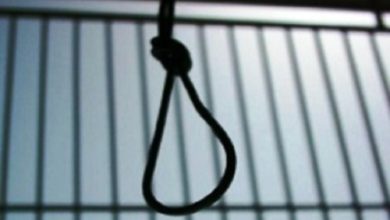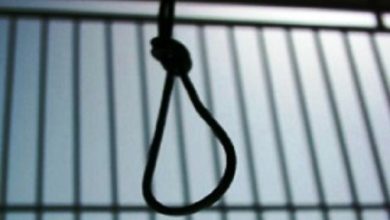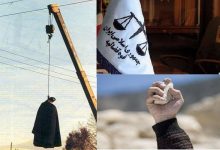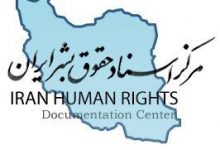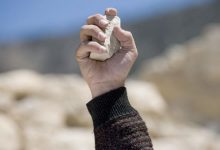Chronicle of an Execution: The Case of Mohsen Amir Aslani
While Mr. Amir Aslani was known to have received a conviction for the religious crime of heresy because he rejected the tale of Jonah and the whale, that conviction did not carry a death sentence. Rather, some alleged that Mr. Amir Aslani had been convicted of the national security crime of spreading corruption on Earth, which can be a capital crime. Meanwhile, the authorities stated that his execution pertained instead to accusations of rape leveled against him by erstwhile female followers.
*** The similarity of a second set of charges leveled against the accused as his first case was coming to a close—including those of spreading corruption on Earth and rape—suggests that safeguards against double jeopardy were intentionally and repeatedly ignored. In examining the proceedings related to this second set of charges, Raeesi demonstrates that minimal evidentiary requirements were not met, and that several Supreme Court orders pertaining to the case were ignored. Despite attempts by some judges to uphold domestic law during Mr. Amir Aslani’s prosecution, the tendentious approach of other judiciary officials precluded a fair trial and led to numerous violations of Iran’s own Code of Criminal Procedure. In his analysis, Raeesi counts multiple deviations from domestic law where it should have ensured a dismissal of the charges and Mr. Amir Aslani’s release from prison. As such, the Mohsen Amir Aslani case is a textbook example of the arbitrariness and politicization at the heart of Iran’s judiciary.
Chronicle of an Execution
Although Mohsen Amir Aslani’s execution took place some time ago, legal concerns about his case still require deeper analysis and informed critique. This commentary investigates some details of the case including its procedural history, the intervention in the case by the head of the Judiciary, the roles of various judges in the issuance of the death penalty against Mr. Amir Aslani, and the execution of the sentence.
Mohsen Amir Aslani Zanjani was born in 1977 in Tehran and executed on the September 24, 2014 in Rajaeeshahr Prison. The government of the Islamic Republic of Iran (IRI) carried out his sentence after significant efforts by his family and lawyers to save him from being executed.
His execution was the culmination of various charges: heresy in Islam and insulting the Prophet Jonah on one hand, and a charge of rape on the other.
1. Arrest and first trial
In May 2006, security agents raided Mr. Amir Aslani’s house and arrested him along with his wife and his secretary.
After the arrest, his case was referred to one of the procuratorial branches of the Ershad Prosecutor’s Office [the office tasked with prosecuting cases that involve morality charges and charges relating to the sale or purchase of alcoholic beverages in Tehran]. Since his activities had begun only a short time before his arrest, it is unlikely that he would have committed the crimes commensurate with his high number charges over such a short duration. To wit, he was prosecuted for intervening in medical affairs and insulting a prophet in the same case.
Mr. Amir Aslani’s denial of the charges against him was not effective and eventually the procurator sought to show culpability on charges of heresy in primary and ancillary principles of religion, insulting the Prophet Jonah, engaging in haram (forbidden) acts, committing offences against public decency and dispensing medical treatment without a valid medical license. The deputy prosecutor issued an indictment including all of these charges. Based on these charges, the order for Mr. Amir Aslani’s temporary detention should not have mandatory and it should have been possible for the accused to be freed on bail, but instead he remained in pre-trial detention.
Mohsen Amir Aslani spent a long period of time in prison without being afforded access to legal counsel. Investigations took place in absence of his lawyer, and it is clear that his denials did not affect the authorities’ decisions.
Ms. Leila Ghadimi, Mr. Amir Aslani’s office manager, was arrested at the same time as Mr. Amir Aslani. Mrs. Ghadimi’s confession that she had kissed Mr. Aslani’s hand was sufficient to secure his conviction on a charge of rape, but after Mr. Amir Aslani’s execution Mrs. Ghadimi stated that she had been pressured by an interrogator to confess that she had kissed his hand. She now rejects her initial confession.
After the indictment was issued, the case was referred to the Branch 1084 of the Public Criminal Court of Tehran. Despite Mr. Aslani and Ms. Ghadimi’s rejection of the charges, the Public Criminal Court went ahead with the trial and issued opinion no. 1675-1385/09/10 in December 2006 (see table 1).
After this, the defendants appealed the ruling and the case was referred to the Branch 31 of the Appellate Court of Tehran Province. Considering his young age and lack of criminal record, the Appellate Court determined that Mr. Amir Aslani was entitled to leniency and the commutation of his sentence. As such, the Court verified the opinion in question with commutation. At the same time, however, a second case containing serious charges against Mr. Amir Aslani was also being pursued.
Table 1: Description of initial sentences for Mohsen Amir Aslani
| Charge | Rationale | Initial sentence (no. 1675 dated 12/9/2006, issued by Branch 1084 of the Public Criminal Court of Tehran) | Final judgment (no. 3127 dated 3/17/2007 issued by Branch 31 of Court of Appeals of Tehran Province) |
| Heresy, Insulting the Prophet Jonah | Teaching Quran in Persian and introducing the story of the Prophet Jonah as fiction | Three years of imprisonment | Two years of imprisonment |
| Engaging in Haram (forbidden) acts | Being kissed on the hand by a secretary | 50 lashes | Fine of one million Rials |
| Committing offences against public decency | Arranging meetings where both men and women were present | 70 lashes | 50 lashes |
| Performing medical treatments without a license | Providing psychological consultation | Six months of imprisonment and fine of five million Rials | Fine of three million Rials |
| Collecting money through illegitimate means* | Receiving registration fees from attendants | One year of imprisonment | Six months of imprisonment |
[*A broadly-defined charge meant to cover financial crimes that are not explicitly defined elsewhere. See Article 2 of the Law Increasing Penalties against Those Convicted of Bribery, Graft, and Fraud.]
The table above shows the initial sentence issued for late Mr. Amir Aslani. As indicated in the table, his sentence was ultimately reduced to two-and-a-half-years’ imprisonment, a fine of four million Rials and 50 lashes. At the same time, however, he was being prosecuted for the same alleged actions under a different approach under a charge of “spreading corruption on Earth” (ifsad fel-arz). In effect, another part of the Judiciary was creating a second case against him based on the same set of accusations that had been subject to adjudication in his first case.
2. Pursuit of a new case – deviations from the legal process as defined by domestic law
Although additional details about the case are hard to come by, available documents suggest that fair trial standards were not observed in Mohsen Amir Aslani’s case. The first irregularity was a clear deviation from Iran’s Code of Criminal Procedure—namely, the addition of new charges for alleged actions that had already been prosecuted and subject to the aforementioned initial judgment.
In addition to the charges outlined above, Mr. Amir Aslani was also accused of raping Elaheh Tajerfar, Arezou Mehrabi, and Maryam Valashjerdi several months after his arrest. The authorities failed to voice an adequate rationale for what was a relatively unconventional action. While he had been accused of committing offences against public decency, the accusation of rape was suddenly included in his case based on claims made by the three women.
Since rape and adultery are prosecutable in provincial courts without the need for an indictment, the matter was referred to the Branch 79 of the Criminal Court of Tehran Province. The court labeled the rape allegations as “spreading corruption on Earth” (ifsad fel-arz) despite the fact that there were no legal grounds to do so, and then referred the case to the Revolutionary Court system on the basis that a criminal court lacked competence to try that particular charge. However it is worth noting that rape itself is not within the subject-matter jurisdiction of the Revolutionary Courts. The case was then referred to the Branch 15 of the Revolutionary Court of Tehran, the presiding judge of which is Judge Abolqasem Salavati, a well-known extremist. Since the Revolutionary Court is not permitted to take a case without an indictment, Branch 15 sent the case back to the prosecutor’s office so that the prosecutor could issue the indictment and the Revolutionary Court could take up the case in accordance with the relevant procedural provisions. Hence the case was referred to the procurator at District 21 of the Tehran Public and Revolutionary Prosecutor’s office [District 21 is a geographical distinction]. Due to a lack of evidence to prove the charges, the procurator decided to put an end to the prosecution under the charges of rape and spreading corruption on Earth and formally declared that these two charges could not be established. The assistant prosecutor of the prosecutor’s office agreed with the decision. Therefore, the decision to stop prosecution became final. At this point, Mohsen Amir Aslani should have been freed within a reasonable timeframe.
Not only was Mr. Amir Aslani not freed; instead, the deputy prosecutor [a position distinct from that of assistant prosecutor, or dadyar in Persian] in charge of the District 21 prosecutor’s office became unusually sensitive to the issue and personally intervened in the case. He insisted that the offenses had indeed taken place despite the fact that two judges had decided otherwise (that is, the procurator and assistant prosecutor; in countries that employ the inquisitorial model in criminal proceedings, these court officials are also officially judges). This does not take place under normal circumstances. Some may argue that it is a prosecutor’s right to use his legal authority in this fashion. However, since the assistant prosecutor was the prosecutor’s representative at this stage, legally the assistant prosecutor’s opinion was the official opinion of the prosecutor. One additional criticism of the prosecution leveled by the Branch 31 of Iran’s Supreme Court was that the deputy prosecutor’s claim that the offenses had taken place was unreasonable due to the fact that it was contrary to the procurator’s determination that there was insufficient evidence to establish culpability (in all legal systems, rulings issued by a competent judge in a case in which he/she has jurisdiction are deemed final, in which cases it is not possible to modify the decision absent an appeal). From a legal standpoint, the case had already been adjudicated. After the procurator’s confirmation, the decision made by the procurator to stop a prosecution is considered final and can be changed only after new evidence has been brought to light.[1]
In the Iranian criminal justice system an issue that has already been adjudicated must be treated as valid and well-established.[2]
3. Second deviation from legal norms
As indicated above, the determinations made by the procurator and assistant prosecutor should have been reflected in the outcome of the case. However, contrary to the relevant rules of procedure the head of the District 21 prosecutor’s office imposed his opinion over those determinations. In turn, the procurator rejected the outcome and insisted that his own prior decision to put drop the case do to a lack of proof was correct. Due to the conflict between the procurator and the head of the Prosecutor’s office, the case was referred to Branch 28 of the Revolutionary Court for mediation. In an opinion numbered 94 and dated December 11, 2006, the court accepted the decision of the head of the Prosecutor’s office despite the absence of any legal grounds to do so and forced the procurator to issue the indictment. An indictment for “spreading corruption on Earth” through rape was finally issued against Mohsen Amir Aslani without providing the rationale called for by law. This paved the way for the Revolutionary Court to take the case.
4. Issuance of death penalty for the first time
After removing the procedural barrier related to the indictment, Branch 15 of the Revolutionary Court continued prosecution of Mr. Amir Aslani’s charge of spreading corruption on Earth. Setting aside the fact that there is a clear distinction between the crime of rape and that of spreading corruption on Earth in Islamic teachings, it is important to point out that crimes defined as hodood in Islamic Law, such as rape or the concept of “spreading corruption on Earth” have specific and distinct evidentiary standards. As stated in Islamic resources and attributed to the Prophet Muhammad, doubt and hesitation [as to culpability] result in an annulment of the hodood punishment [3]. In addition, there are strict requirements for proving culpability in the prosecution of rape in Islamic Law. For example, four repeated confessions by the defendant in the presence of the judge or the testimony of four “just” adult male witnesses is necessary to prove the matter. In Mohsen Amir Aslani’s case, however, his denial was dismissed despite the absence of adequate proof. In Shari’a law, in the absence of other required evidence a denial by the defendant is supposed to be taken as a cause of doubt in proving the accusations in question, which results in the implementation of the rule of dar’ [whereby punishment is annulled in the absence of sufficient certainty] and the charges in question being dropped. But instead, at the end of this phase Branch 15 of the Revolutionary Court of Tehran issued a death sentence for Mohsen Amir Aslani for the crime of “spreading corruption on Earth” despite the absence of sufficient evidence or reasoning to establish culpability.
Mr. Amir Aslani’s counsel appealed the verdict and the case was referred to Branch 31 of the Supreme Court of Iran in accordance with Article 233 of Iran’s Code of Criminal Procedure. The branch nullified the verdict issued by the Revolutionary Court on the basis that it lacked subject-matter jurisdiction in the case. That nullification was deemed final.
According to the relevant rules of criminal procedure (as defined in Article 266 of Iran’s Code of Criminal Procedure), after this point decisions such as the one issued in this case can no longer be protested—because although the prosecution has not come to a definitive end, Iran’s Supreme Court has assumed jurisdiction. No court or judicial authority has the right to reverse judgments issued by the Supreme Court when the Supreme Court assumes authority in a case due to disputes as to the competence of two lower courts in one jurisdiction (Article 58 of the Code of Criminal Procedure and Article 28 of Code of Civil Procedure), and in such cases its judgment is final. In this case, events suggest that the judges of Branch 31 of the Supreme Court were trying to redirect the case onto a more standard legal path.
5. Issuance of death penalty for the second time
The Supreme Court’s ruling remanded the case to the provincial criminal court. Branch 79 of the Criminal Court of Tehran Province then took up the case for the second time (see Section 2). Branch 79 had previously convicted Mr. Amir Aslani of rape and “spreading corruption on Earth” and referred the case to the Revolutionary Court. It is quite possible that this sequence of events was designed to maintain a legally-sound appearance while also upholding the otherwise unconventional conviction of Mr. Amir Aslani. Indeed, the head of Branch 31 of the Supreme Court who remanded the case to Branch 79 should have been fairly certain that the provincial court would re-convict the defendant. As such, referring the case to a branch that had already issued a ruling on the case was not appropriate.
Branch 79 of the Criminal Court of Tehran Province ultimately had to take up the case instead of sending the case to the Revolutionary Court on the basis of lack of competence, as it had done the previous round. Not surprisingly, the court convicted Mr. Amir Aslani of two counts of rape—Branch 79, which was composed of five judges [4], unanimously voted to exonerate the defendant of the rape of Maryam Valashjerdi but convicted him of the rapes of the two other women in the case, Elaheh Tajerfar and Arezou Mehrabi. On these two counts, two judges voted to drop the charges and the remaining three voted against the defendant. As a result the death sentence was issued again, this time only for the crime of rape.
6. Annulment of death sentence for the second time
Mr. Amir Aslani appealed this second judgment from Branch 79, and in keeping with Iranian criminal procedure, as a death penalty case the appeal went before the Supreme Court. At this stage, the case was again referred to Branch 31 of the Supreme Court. The Supreme Court does not perform adjudication on the merits, however reassessment in a branch of the Supreme Court is allowed and even necessary (the Supreme Court only performs procedural review [5], meaning that similar to the conditions of appellate jurisdiction elsewhere it verifies or rejects verdicts issued by lower courts instead of directly issuing a death sentence or an exoneration).
In 2010, Branch 31 of the Supreme Court declared that the judgment issued by Branch 79 was contrary to the Islamic Penal Code and Islamic law and nullified the judgment due to a lack of sufficient proof. With this ruling, the Supreme Court sent the case back to be adjudicated in another branch of the criminal courts of the province. The Supreme Court issued orders for further investigation and required the court to follow them accordingly.
Next, the case went before Branch 72 of the Criminal Court of Tehran Province. On March 6, 2011, three out of five judges of the branch sentenced Mr. Amir Aslani to death for the third time in a judgment numbered 979. Although this was to be a de novo review, no further investigation took place, the defendant denied the accusation once again, and there was no evidence other than the claims made by the women.
7. Annulment of death sentence for the third time
After another appeal, the case was referred once again to Branch 31 of the Supreme Court. Since no further investigation had taken place in spite of the Supreme Court’s order to perform a detailed investigation of each of his accusers, the Supreme Court declared that the judgment issued by Branch 72 was incomplete. As a result, the court annulled the death sentence issued by Branch 72 in judgment no. 9009970908700418 dated December, 21, 2011. In this opinion, the judges of Branch 31 of the Supreme Court referred back to the procurator’s opinion, casting serious doubts on the judgment and ultimately overturning it.
By this point the defendant had been imprisoned for more than five years. As he entered his sixth year of imprisonment without having been granted even a day’s worth of furlough, Mr. Amir Aslani was in limbo and the heavy shadow of the death penalty was hanging over him. The case was at a critical juncture, not least because Mr. Amir Aslani should have already been freed from prison: he had served well over the full two-and-a-half-year sentence from his first case (see Table 1). Furthermore, if the trial courts–Branches 79 and 72–had followed the orders issued by Branch 31 of the Supreme Court, an eventual release would have been highly likely. But the head of the Judiciary intervened in the case and prevented Mr. Amir Aslani’s release.
After the rape case was remanded by the Supreme Court in December 2011, the typical next step would be for the head of the Judicial Complex of Criminal Courts of Tehran Province [the building and administrative unit wherein all criminal courts in the province are located) to refer the case to another branch of the Criminal Court of the Tehran Province due to the imprisonment of the defendant. However, he did not follow the Supreme Court’s order. Instead of referring the case to another court, the head of the Judicial Complex of Criminal Courts did nothing with the case for fourteen months—an unreasonable delay by any measure—and sent the case to the head of the Judiciary, Ayatollah Sadegh Larijani. Mr. Larijani then nullified all of the previous decisions made in the case up until that point except those issued by Judge Salavati of Branch 15 of the Revolutionary Court of Tehran. The next deviation in the case occurred in the context of this development.
8. Obvious violations of Iranian law during adjudication
The judges who had previously attempted to adjudicate the case impartially, such as the procurator, assistant prosecutor and judges of Branch 31 of the Supreme Court were denied access to the case from this point on. Subsequently, the three judgments issued by Branch 31 of the Supreme Court were simply ignored.
In Iran, the reassessment of judicial decisions can be sought through two avenues: through either normal appeals or extraordinary procedures. The latter are set forth in Article 272 of the country’s Code of Criminal Procedure and Article 18 of the Law on the Establishment of Public and Revolutionary Courts [6], and can only be secured in cases that meet conditions specified in Article 18. The conditions for this extraordinary procedure, a comprehensive review of the legal process in a case, are that the judgment be final and in obvious contradiction to Islamic law in the opinion of the head of the Judiciary. In this case, no final judgment had yet been issued, and by all legal custom the procedure should have continued.
Although the Head of the Judiciary had severely questioned Article 18 and its requirements and had sought to prohibit its application in normal situations from the beginning of his career in the Judiciary, he uncharacteristically applied Article 18 in this case.
Article 18 clearly indicates that its provisions can only be invoked if the opinion in a case is final. In addition, every judge or legal expert knows well that a renewal of the trial process is indeed possible when normal procedures have been brought to an end but new reasons are available.
The case had not reached that stage yet, however. The concerns stated by Branch 31 of the Supreme Court had not been answered as ordered, and the last opinion in the case was issued by Branch 31, demanding a detailed reassessment. Given the open-endedness of that ruling, there was no legal need or possibility to nullify it as Mr. Larijani did. Nor were there any legal grounds to refer the case to the general assembly of the Supreme Court to issue a compulsory judgment [7]. Instead, a special order was issued by head of the Judiciary.
Based on the above, one might conclude that whenever the leadership of the Judiciary cannot force specific judges to submit to unlawful practices to arrive at a desired conclusion it resorts extralegal methods to make sure that no cases are accidentally adjudicated fairly.
Regardless of Mohsen Amir Aslani’s charges and the question of his guilt, he had the right to be tried using standard, accepted methods. In the absence of legal requirements, the head of the Judicial Complex of the Criminal Courts of Tehran Province sent his case to the head of the Judiciary’s office and demanded application of Article 18 and nullification of the order issued by Branch 31 of the Supreme Court. This is a clear violation of domestic law.
In a normal situation, the case should have remanded to another criminal court in Tehran Province. It is even laid out in law that if there is no other court whose judges have not already issued an opinion on a case that the case should be referred to the nearest criminal court of the adjacent province [8]. However, it is evident that political issues affected the case and that events were engineered to achieve a specific desired result—namely the result desired by some Judiciary officials.
Table 2. Summary of decisions made in the second case by chronological order
| Legal authority | Charge | Judgment | Rationale | Date |
| Branch 15 of the Revolutionary Court of Tehran | Spreading corruption on Earth | Death penalty | Claims made by three women on rape. Claims on heresy in religion. Insulting Prophet Jonah | 1/25/2008 |
| Branch 31 of the Supreme Court of IRI | Change of the accusation from “spreading corruption on Earth” to rape, with necessity of further investigation | Annulment of the verdict issued by Branch 15 of the Revolutionary Court for lack of authority over the case. Referral to a rightful court. | Lack of competence of the Revolutionary Court. Lack of proof for charge of “spreading corruption on Earth” | 4/20/2008 |
| Branch 79 of the Criminal Court of Tehran Province | Rape | Death penalty issued by 3 out of 5 judges | Judges’ knowledge, plaintiffs’ objection | 3/10/2010 |
| Branch 31 of the Supreme Court of IRI | Rape | Annulment of death penalty for second time | Lack of adequate proof | (Date unavailable) |
| Branch 72 of the Criminal Court of Tehran Province | Adultery | Death penalty for adultery | Claims made by three women, judge’s knowledge | 3/6/2011 |
| Branch 31 of the Supreme Court of IRI | Adultery | Annulment of death penalty for adultery | Lack of reasons to prove offence | 8/29/2011 |
| Head of the Judiciary | Spreading corruption on Earth | Illegal disqualification of the Criminal Court of the province and prevention of legal intervention by Branch 31 of the Supreme Court | Lack of adequate proof | (Date unavailable) |
| Branch 13 of the Supreme Court of IRI | Spreading corruption on Earth | Confirmation of the previously-overruled death sentence from Branch 15 of the Revolutionary Court (seven years after the initial judgment) | Defendant’s denial. Reports and claims without judicial validity. | 11/30/2013 |
9. Issuance of death penalty for the fourth time
Through an illegal act by the head of the Judiciary, the case was taken away from Branch 31 of the Supreme Court. It was instead referred to Branch 13 of the Supreme Court, which is famous for its submissiveness to state authority. The branch wrote an emotionally-charged introduction in which it made an extralegal conclusion before attempting to conduct any further investigation of the charges of rape and “spreading corruption on Earth.” In this manner the death sentence issued by Branch 15 of the Revolutionary Court in 2007 was illegally revived after 5 years. This confirmation of a verdict whose revival was by that point [legally] impossible made Mohsen Amir Aslani’s execution final.
Asghar Baghani and Akbar Yasaghi, two of the judges of Branch 13 of the Supreme Court had backgrounds in Iran’s notorious Revolutionary Court system. Like his fellow judge Mr. Salavati, who issued the initial death sentence against Mr. Amir Aslani, Mr. Yasaghi is also named on the list of Iranian officials subject to targeted sanctions due to complicity in human rights violations [9].
The defendant had been sentenced to two-and-a-half years of imprisonment by the appeals court for his first set of charges. Unfair proceedings led to Mr. Amir Aslani being sentenced to death for what were substantively the same charges. He was tried a second time for the same actions that led to his original conviction, but different language was used to level much harsher charges, including the charge of “spreading corruption on Earth.” Requests for clemency made by the defendant and his family did not affect the decisions of the Judiciary officials.
On the dawn of Wednesday September 24, the hangman’s noose encircled Mohsen Amir Aslani’s neck. His execution was illegal. The hanging was engineered by Judge Salavati, Judge Eftekhari, Mr. Larijiani (the head of the Judiciary), Judge Baghani and Judge Yasaghi, and contrary to domestic law.
10. Conclusion
This report is the result of a detailed legal discussion and testimony from several informed sources. The case raises several serious questions; we will leave the conclusion to the reader.
Our first question is: how common is this kind of judgment in Iran? Another important question is: whether or not Mohsen Amir Aslani was guilty, isn’t this case a sign of uncertainty and irregularity in the judicial system, injustice in the treatment of defendants, and an obvious violation of the right to a fair trial? How does the justice system of a country become a politicized institution that militates against the realization of justice? Regardless of the necessity of respecting human rights and following international commitments laid out in the International Convention on Civil and Political Rights (ICCPR), is it possible to guarantee fair trials given the vagaries of domestic criminal law? Taking into account the use of a charge such as rape in the second set of proceedings—which might cause relative sympathy among people—along with ideological obstacles, long trials, and the annulment of the death penalty on three separate occasions, is there any doubt that Mr. Aslani was subjected to unlawful treatment for political reasons? And finally: who is responsible for this volume of violations in one case? One could techinically make a legal case against an offending judge, but how are the obvious offenses of the head of the Judiciary to be addressed?
Endnotes:
[1] For more information please refer to: Jazaei, Manouchehr, “validity of final cases in legal claims in Iran”; first discussion, decisions made by judicial authorities in investigation phase in prosecutor’s offices. See the electronic version here.
[2] Article 3(e) of the amendment of the Law on Establishment of Public and Revolutionary Courts.
[3] Mahmoudi, Firouz; The Rule of Dar’ and its compliance with “doubt in favor of the defendant” in Positive Law; Imam Sadeq quarterly; online publication.
[4] Article 24(b) of the Law on Establishment of Public and Revolutionary Courts.
[5] Article 264 of Code of criminal procedure for Public and Revolutionary Courts.
[6] Article 18 of the Law on Establishment of Public and Revolutionary Courts (2006 amendment) states that the criteria for non-final and appealable judgments are laid out in the Code of Procedure. Appeals are governed by the relevant Codes of Procedure. Final judgments of Public and Revolutionary Courts, military bodies and the Supreme Court of IRI can be reassessed only via a demand for an extraordinary review of the case or third-party intervention in accordance with the related law, unless the Head of the Judiciary determines that the judgment is obvious violation of Islamic precepts. Such a determination can be considered a reason for resumption of the legal process and the case is to be referred to a rightful authority.
[7] Article 24 – After nullification by the Supreme Court, the appropriate authority should act as follows:
a- In the case of the nullification of the judgment by the Supreme Court of IRI, it is to respect the Court’s opinion and perform adjudication on the merits
b- In the case of the nullification of the judgment due to incompleteness of investigations, it should perform investigations as determined by the Supreme Court and issue its verdict
c- In the case of the nullification of the judgment for other reasons, it can issue a compulsory verdict. If the verdict is appealed by a person who has the right to appeal, the case shall be reassessed in the Supreme Court. Then if the [selected] branch of the Supreme Court accepts reasons presented by the authority, it confirms the verdict. Otherwise, the case shall be assessed in a general assembly of relevant criminal or legal branches of the Supreme Court. If opinion of the branch of the Supreme Court is confirmed, the verdict shall be nullified and the case shall be referred to another branch of the court. The referred court shall issue its verdict based on reasons provided by a general assembly [of the judges] of the Supreme Court. This verdict shall be final.
[8] Articles 265 and 266 of Code of Criminal Procedure for the Public and Revolutionary Courts.
[9] See Ali Akbar Yasaghi’s name on the list of officials subject to EU sanctions here.


